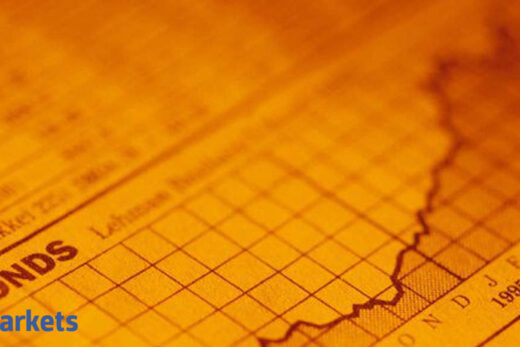Banks parked Rs 2.08 lakh crore last Thursday through the overnight reverse repo window, less than one-third of this financial year’s peak at Rs 7.29 lakh crore on April 6.
The banking system has net surplus liquidity of Rs 7.10 lakh crore versus Rs 8.03 lakh crore at the end of September.
Local markets were shut on Friday due to the Dussehra festival.
Although the introduction of variable reverse repo rate (VRRR) with 7-day or 14-day maturities has helped suck surplus cash, the consequent drop in the overnight liquidity position only points to a northward journey in the local interest rate trajectory.
In between, rising global crude prices sent the local benchmark yield to 6.39%, the highest level since April 16 last year, show by Bloomberg data compiled by ETIG. The one-year Overnight Indexed Swaps (OIS) – a derivative rate gauge – jumped nine basis points Monday, reflecting a possible change in the interest rate cycle.
A basis point is 0.01%.
“The RBI has been indirectly working toward normalising the surplus liquidity,” said Madan Sabnavis, chief economist at CARE Ratings. “While overnight liquidity dropped to the lowest since the beginning of the pandemic, VRRR is also taking surplus cash away, albeit with the funds being put here on a voluntary basis. Collectively, this preludes to a change in the interest rate cycle.”
Corporates are now going for bond fundraising before their funding costs go up in the next two quarters.
A combination of factors including surging global crude oil prices and rising US Treasury yields are pushing funding costs higher in India, with surplus liquidity contracting gradually.
“Amid rising commodity prices and inflation, fundamentally the rate trajectory is only upside,” said Soumyajit Niyogi, associate director at Indian Ratings. “However, with active intervention from central banks, rates are benign across the globe. Back home, the RBI is expected to allow orderly movement of yields, rather than keeping it at the 6% level.”
Daily reverse repo surplus liquidity was at a peak of Rs 8.53 lakh crore, reported on May 5 last year, when the first wave of coronavirus shattered the economy and companies were seen scrambling for money.
Global crude oil prices hit a new three-year high on Friday, climbing above $85 a barrel on forecasts of a supply deficit over the next few months.



